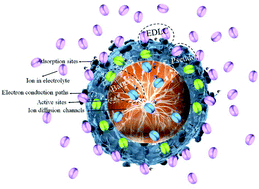Mechanism orienting structure construction of electrodes for aqueous electrochemical energy storage systems: a review
Abstract
Aqueous electrochemical energy storage systems (AEESS) are considered as the most promising energy storage devices for large-scale energy storage. AEESSs, including batteries and supercapacitors, have received extensive attention due to their low cost, eco-friendliness, and high safety. However, the insufficient energy densities of the state-of-the-art AEESSs limit their practical applications which are mainly dominated by the electrochemical performances of individual electrode materials. Understanding the underlying relationship between structures, reaction mechanisms, and performances can further lead to the design and optimization of structures of the electrodes instructively, thereby harvesting favorable performances. This review classified the intrinsic logic of structure–mechanism–performance by taking some prevailing mechanisms with some classical structures of materials as examples. Moreover, some problem-oriented structural engineering strategies are proposed aiming to optimize their performance. Finally, comprehensive structural design engineering and some suggestions for fine modifications of electrode materials at the atomic and molecular levels are proposed to combine the advantages of supercapacitor- and battery-type materials for designing excellent electrode materials for AEESSs.

- This article is part of the themed collection: Recent Review Articles


 Please wait while we load your content...
Please wait while we load your content...